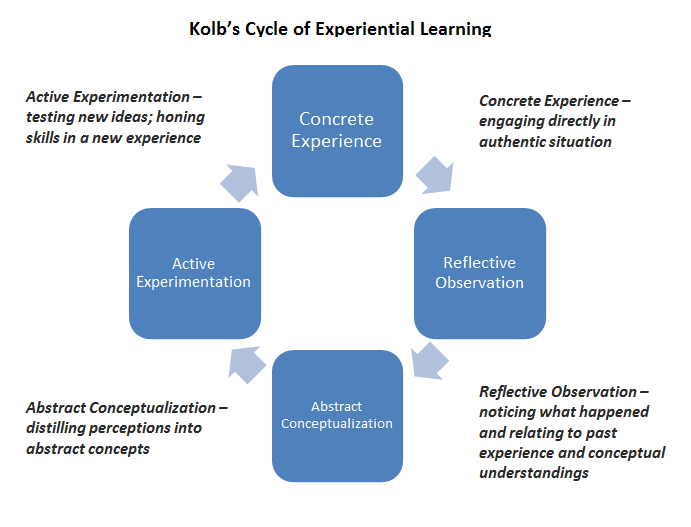Syllabus: GS2/Education
Context
- The current education system needs to integrate experiential learning.
About
- The Nature of Learning and the Changing Landscape: Humans are inherently learning beings, and today’s digital world has transformed access to information.
- With AI and bots capable of teaching concepts, traditional schools are at risk of becoming obsolete if their role is limited to content delivery.
What is Experiential Learning?
- Experiential learning is a method of learning through direct experience, reflection, and application.
- David A. Kolb is widely credited with developing and popularizing the theory of experiential learning.
- Instead of just reading about a concept or listening to a lecture, learners actively engage in activities that allow them to “learn by doing.”
- The focus is on the process of learning rather than just the outcome.

Benefits of Experient Learning:
- Improves critical thinking and problem-solving.
- Enhances engagement and motivation.
- Encourages collaboration and communication.
- Builds transferable, real-world skills.
Challenges
- Requires more time, planning, and resources.
- Difficult to implement uniformly in large classrooms.
- Not all students may be initially ready for self-directed learning.
Need for the Reforms in India
- Schools are affected by infrastructure gaps, teacher shortages, and unequal access, especially in rural and under-resourced contexts.
- Current systems are overly exam-centric and reward memorisation, which limits critical thinking and creativity.
- Neuroplasticity supports the idea that brains can adapt and learn through varied experiences over time.
Best Models of Education System around the world
- Finland: Known for its focus on student well-being and a lack of academic pressure, Finland’s system emphasizes play-based learning in early years and focuses on critical thinking and problem-solving.
- Singapore: High Standards and Rigorous Outcomes.
- World-leading performance in Programme for International Student Assessment (PISA) rankings (math, reading, science).
- Carefully structured curriculum.
- High investment in teacher development.
- Japan: Discipline and Consistency.
- Strong cultural value on education and respect.
- Uniform national curriculum.
- Emphasis on character education and responsibility (e.g., students clean classrooms).
- Strong work ethic and moral development.
Conclusion
- The challenges facing the Indian education system are deep-rooted but not invincible.
- Addressing them requires a multi-pronged approach involving government policy, community participation, teacher empowerment, and technological innovation.
- By investing in inclusive, adaptive, and learner-centric reforms, India can build an education system that equips its citizens for the challenges and opportunities of a rapidly evolving world.
Source: TH
Previous article
Importance of the Deputy Speaker in Lok Sabha
Next article
Poverty Fell Significantly Last Year